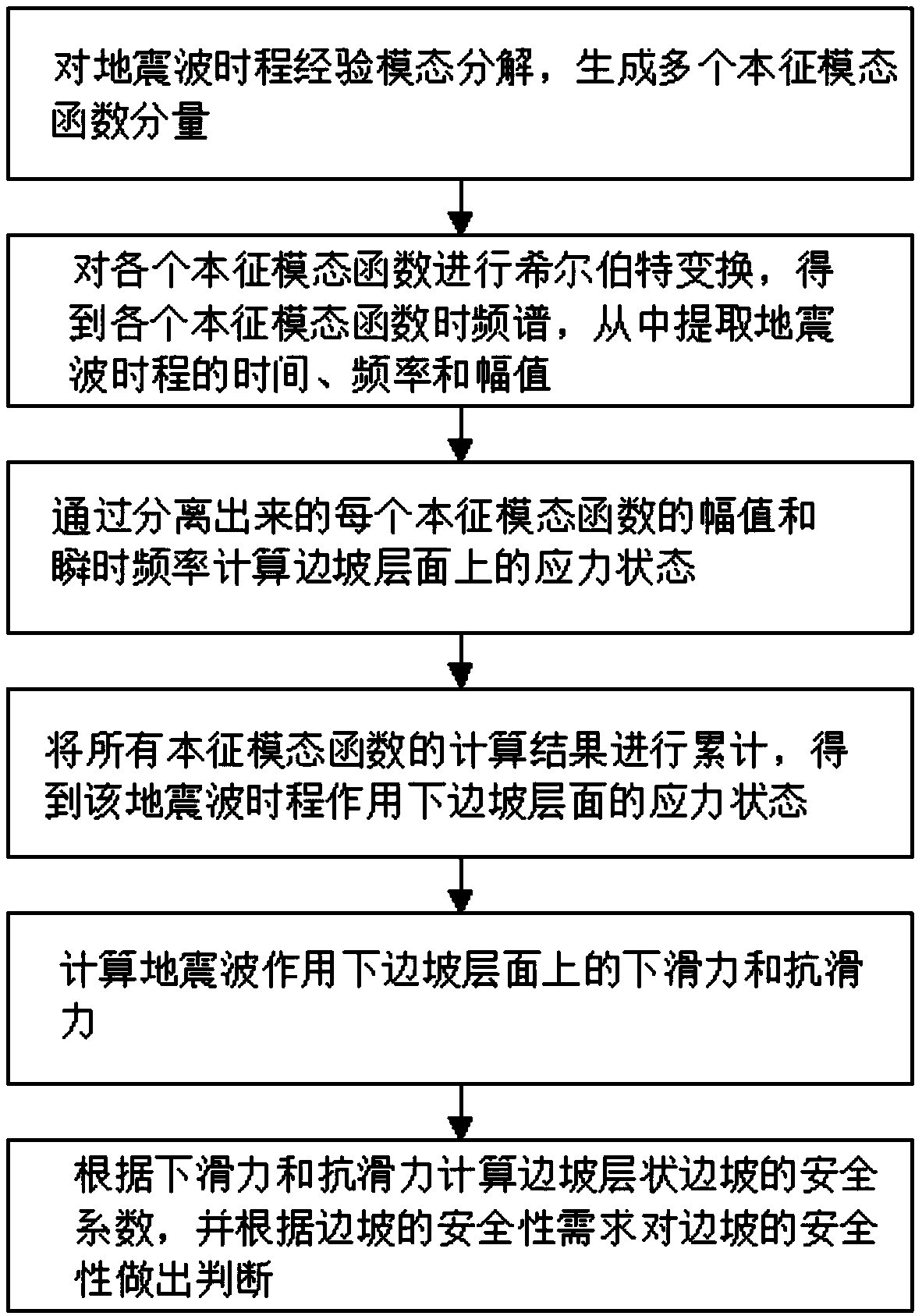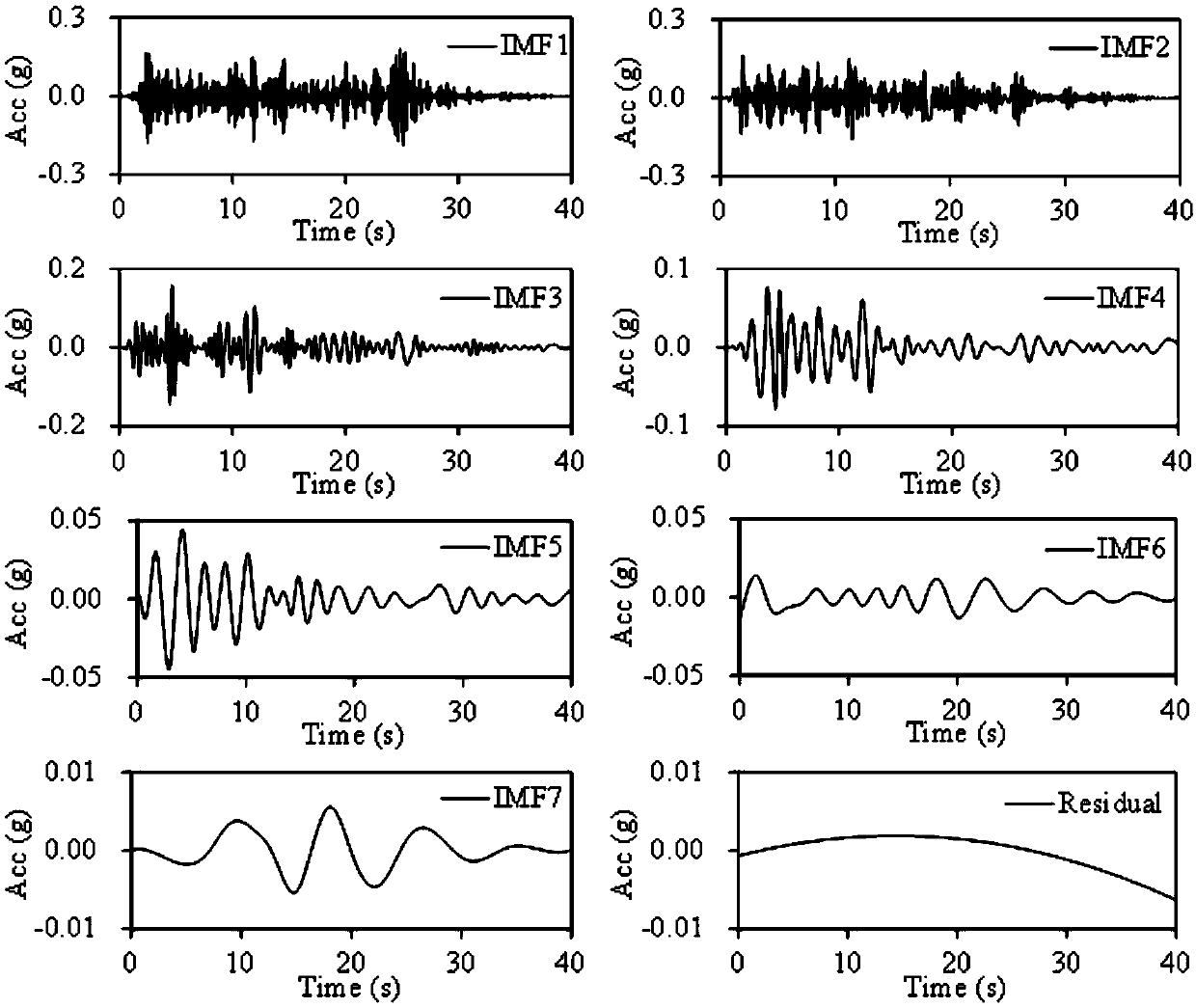Slope seismic stability time frequency analysis method
A time-frequency analysis and stability technology, applied in seismic signal processing and other directions, which can solve the problems of complex operation of numerical analysis methods, questionable accuracy of calculation results, and inability to consider time-frequency-amplitude characteristics of seismic waves at the same time.
- Summary
- Abstract
- Description
- Claims
- Application Information
AI Technical Summary
Problems solved by technology
Method used
Image
Examples
Embodiment
[0070] Such as figure 1 As shown, a time-frequency analysis method for slope seismic stability includes the following steps:
[0071] a. For the measured seismic wave time history (such as figure 2 shown) for empirical mode decomposition to generate multiple eigenmode functions (such as image 3 shown);
[0072] Using X(t) to represent the seismic wave time history data, after performing empirical mode decomposition on the seismic wave time history:
[0073]
[0074] where t is time, c j (t) is the jth order intrinsic mode function IMF j , r n (t) is the residual component after n times of empirical mode function decomposition, the residual component r n (t) is a constant, a monotone function or a function with only one maximum and minimum point;
[0075] b. Perform Hilbert transform on each eigenmode function generated in step a to obtain each eigenmode function c 1 (t), c 2 (t)...c n The time spectrum of (t), from which the time, frequency and amplitude of the ...
PUM
 Login to View More
Login to View More Abstract
Description
Claims
Application Information
 Login to View More
Login to View More - R&D
- Intellectual Property
- Life Sciences
- Materials
- Tech Scout
- Unparalleled Data Quality
- Higher Quality Content
- 60% Fewer Hallucinations
Browse by: Latest US Patents, China's latest patents, Technical Efficacy Thesaurus, Application Domain, Technology Topic, Popular Technical Reports.
© 2025 PatSnap. All rights reserved.Legal|Privacy policy|Modern Slavery Act Transparency Statement|Sitemap|About US| Contact US: help@patsnap.com



